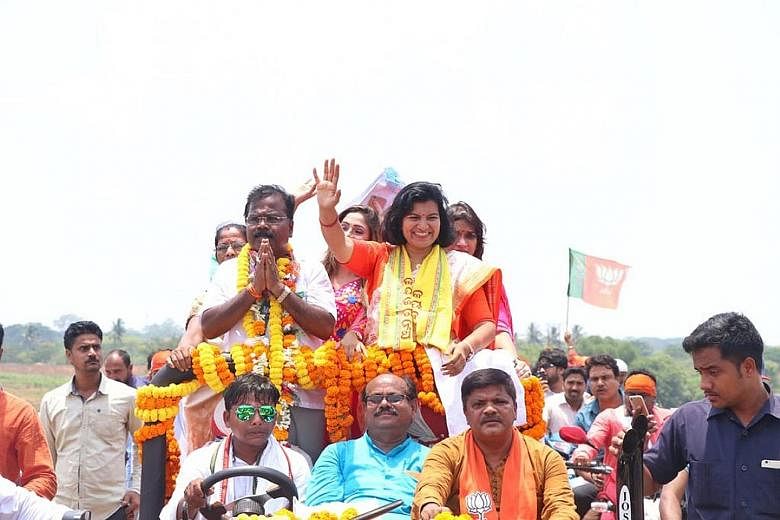Mrs Aparajita Sarangi quit a cushy job as a bureaucrat in the powerful Indian administrative service to jump into politics.
Fielded by Prime Minister Narendra Modi's Bharatiya Janata Party (BJP), Mrs Sarangi, 49, beat veteran politicians to win in Bhubaneswar, a constituency in the eastern state of Odisha.
She is among the MPs who have helped carve out new areas of political influence for the BJP in the eastern parts of the country. It is the first time the party has made its presence felt beyond its traditional strongholds in central India.
Mrs Sarangi is also one of 78 women to have entered politics in these elections. Representation of women in India's Parliament has gone up incrementally, from 64 in 2014 and 59 in 2009.
She believes her win as a candidate was aided, apart from Mr Modi's popularity, by her connection with women voters, which was also cultivated during her tenure as a bureaucrat in the constituency.
Women make up 60 per cent of the population of more than 270,000 in a constituency which was held for two decades by the Biju Janata Dal (BJD), a local party.
"I had an advantage as a woman candidate," she said. "I could go into the kitchen and bedroom of women (in a way) that a man would not have been able to do. I was able to strike an emotional connection."
The BJP won 303 seats in India's general election, surpassing its previous performance of 282 in the 2014 election and giving Mr Modi another term in office.
Women's representation has long been a point of contention, with parties criticised for not fielding more women in a country where they make up a sizeable chunk of the voters.
Only 715 female candidates contested, in comparison with 7,334 male candidates.
The BJP, with its sheer numbers, has the most number of women in Parliament, with 34 MPs.
The Trinamool Congress (TMC) and BJD - both regional parties - had announced that they would field women in 40 per cent of the constituencies in West Bengal state and 33 per cent in Odisha, respectively. TMC has 10 women out of 22 MPs, while BJD has five women out of 12 MPs.
The newly elected MPs come from diverse fields and different parts of the country. Among them are a poet, lawyers, actresses, models, teachers, village-level leaders, advocates and social workers.
Some belong to political dynasties, like Ms M Kanimozhi, daughter of the late Dravida Munnetra Kazhagam leader M Karunanidhi; and Ms Supriya Sule, daughter of Nationalist Congress Party chief Sharad Pawar.
Nearly 60 per cent, according to estimates, are first-time winners, like 25-year-old Chandrani Murmu, the youngest MP ever. Ms Murmu was searching for a job as an engineer a month and a half ago when her uncle, who has ties to BJD, suggested she contest the polls. BJD leader Naveen Patnaik asked her to run in the Keonjhar constituency.
"I didn't have an idea about what happens in campaigning, and there were many ups and downs," she said, revealing that a video containing indecent allegations against her was a low point.
India has had exceptional women politicians. Indira Gandhi, from the Nehru-Gandhi political dynasty, was the country's first woman prime minister.
And there are dozens of leading women politicians today, such as outgoing external affairs minister Sushma Swaraj and outgoing defence minister Nirmala Sitharaman of the BJP, and regional leaders like Ms Mamata Banerjee, a firebrand leader in West Bengal.
But women continue to be the target of sexism. Two new MPs, former actresses Mimi Chakraborty and Nusrat Jahan, were slammed for not wearing traditional attire on their first visit to Parliament.
Many believe India still has a long way to go. "The increase in women legislators is welcome, although probably insufficient on its own to bring about substantial change in terms of legislation," said Ashoka University's assistant professor of political science Gilles Verniers, who is co-director of the Trivedi Centre for Political Data.
"Comparative research shows that impact on legislation becomes substantial once women's representation crosses a one-third threshold. At the current rhythm, it would take India more than four decades to get there," he said.
But he added that the government may become more responsive to women's interests in future, and has launched schemes that indicate it is starting to do so.
Nirmala Ganapathy


